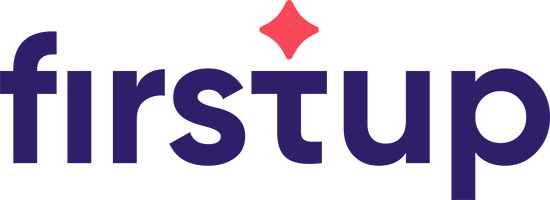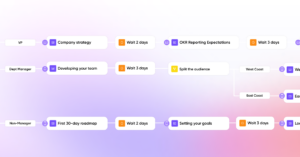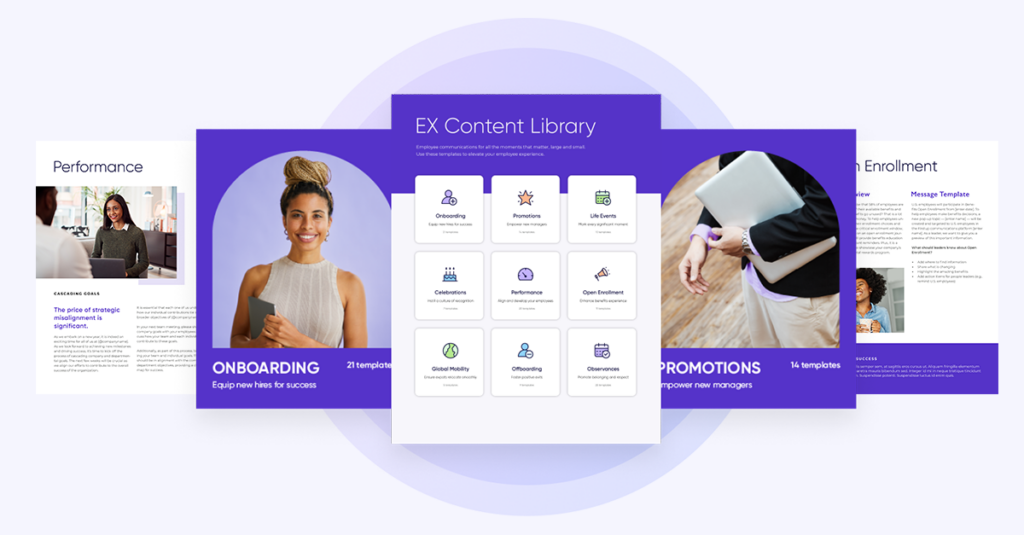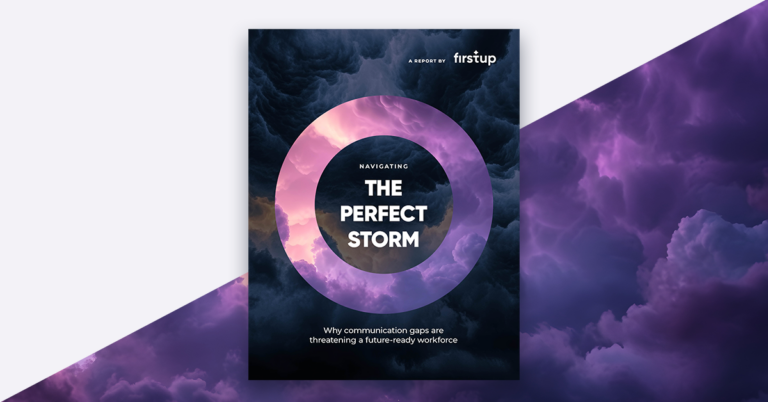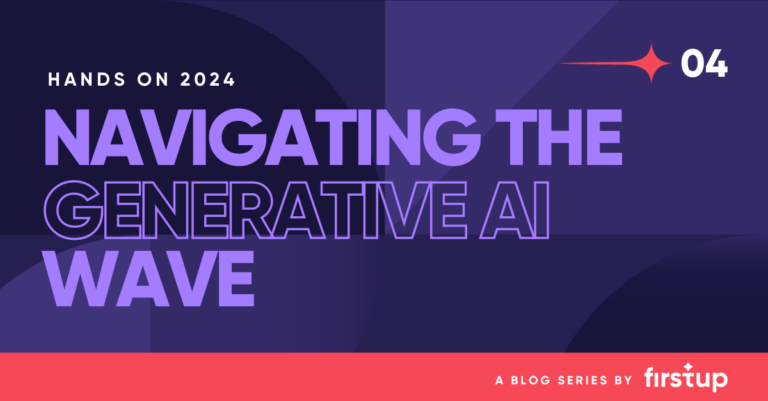In our recent webinar, digital transformation experts Jess Von Bank and Jason Averbook from Mercer, along with Firstup’s Frank Passantino, discussed what makes or breaks digital transformation initiatives. The conversation revealed some eye-opening truths about why most companies struggle—and what the successful ones do differently.
Here are the biggest takeaways from the discussion.
1. Stop thinking of transformation as a project—it’s your new way of doing business
Here’s the mindset shift that’s separating winners from losers: transformation isn’t something you complete, it’s something you live.
“Transformation is a program. It’s not a project,” Averbook emphasized during the webinar. “We are never going to stop transforming, which means our project should never end.”
According to Von Bank, Global Leader of HR Transformation & Technology Advisory at Mercer, this fundamental misunderstanding is why so many initiatives crash and burn. “We used to talk about going on a transformation journey, or we’re in the middle of a transformation initiative,” she explained. “We speak about it like it’s an event, like it’s a happening, and it’s something to be completed.”
But here’s the reality: transformation has become perpetual. It actually never ends.
Think about it this way—are you a speedboat or a barge? Averbook asked webinar attendees exactly this question. “A speedboat means I can move really fast. I don’t have three year plans. I have eighteen minute plans, eighteen week plans. Am I a barge? It takes forever to drive change.”
2. Digital doesn’t mean what you think it means (and this is where most companies go wrong)
Ready for a thinking moment? “The minute you say digital transformation, they’re like, IT’s got it. That is the biggest mistake that you can make,” Averbook revealed.
Here’s what digital transformation means: Digital is a mindset. Technology enables that mindset.
Averbook broke down the four components of being truly digital:
- Aligned mindset with aligned priorities – This isn’t about fancy launch events. “We don’t talk about go lives, but we talk about go begins, and we have clear measures of success.” It’s about setting the right expectations from day one and defining what success looks like.
- Know your audience – You can’t transform everyone the same way. “So often, we just say, we’re transforming. But transforming in a spray and pray and hoping to hit every audience doesn’t work.” Are you transforming the HR function or the workforce? A business function or employees? This clarity is crucial because different audiences require distinct approaches.
- Focus on journeys, not just processes – Here’s where most companies miss the mark. “Processes generate data, which is good, but journeys generate feeling. Transformation is a journey, and we need people to feel like they’re on that journey with us.” It’s the difference between checking boxes and engaging hearts and minds.
- Then comes the tech – Notice this comes last, not first. “There’s a big difference between minimum viable product and minimum lovable product,” Averbook emphasized. “What we’re trying to do in a world where we’re trying to drive people to embody our change, not just adopt technology, is to realize that we have to focus on MLP, minimum lovable product.”
3. Here’s the shocking statistic everyone needs to hear
70% of digital transformations fail—and Von Bank made it crystal clear why: “It’s human behavior, human behavior, human behavior.”
Not the technology. Not the budget. Not the timeline. Human behavior.
“It’s not about adopting tech, it’s about adapting behaviors,” Von Bank explained.
For you, this means recognizing who your audience is, how they behave today, how they aspire to behave tomorrow, and how you can support them in that transition.
Averbook reinforced this with a critical distinction: “So often, the business says IT owns the training. And while IT might own training on how to use a piece of technology, the business and the function owns the education on the value of the transition.”
4. Every company is going through an AI transformation right now (whether they know it or not)
“Every organization is going through an AI transformation as we speak,” Averbook stated matter of factly. “And AI, once again, is a mindset. It’s not just a piece of technology.”
Whether you’re deploying people differently, redesigning work, or rethinking who does what between humans and machines—that’s all AI transformation. Even if you’re just trying to roll out a talent marketplace or get people to use ServiceNow, the barriers are the same.
“I was on the line earlier today with an organization who said no one’s using AI because they think it’s cheating. What’s that? It’s a change discussion. It’s a transition discussion. It’s not an AI discussion.”
5. The real transformation killers (and how to beat them)
Averbook identified the top three people barriers that kill transformation initiatives:
- Mindset inertia – “We’ve always done it that way”
- Confidence deficits – People don’t trust themselves to lead change
- Lack of trust – In the process, the technology, or leadership
But here’s the solution: changefulness, not just change management.
“Change management is teaching someone how to do something,” Averbook explained. “Changefulness is opening your mindset… Change isn’t an enemy. Change is our strategy.”
6. Smart companies are using automation to create personalized change experiences for each employee
Frank Passantino demonstrated how forward-thinking organizations are solving the biggest challenge in transformation: personalizing what change actually means for each individual employee. The gap between strategy and execution happens when employees don’t understand why they should change, what’s in it for them personally, or what specific actions they need to take.
Instead of sending the same generic transformation announcement to everyone, Journeys automatically delivers tailored messages based on each employee’s role, department, and position in the change process. The real power comes from personalizing the “why” behind each change. Journeys can automatically segment employees and deliver role-specific value propositions—explaining not just what’s changing, but exactly how it benefits them in their daily work.
The results speak for themselves: organizations using Journeys to personalize change communications are seeing dramatically higher adoption rates because employees understand not just what they need to do, but why it matters to them personally.
The bottom line
Digital transformation isn’t really about going digital—it’s about embracing a continuous program of mindset change. The companies that succeed understand this fundamental truth: “At the very core of any transformation, especially digital, lies not just the technology but the people using it.”
As Von Bank put it perfectly: “Good HR is good marketing.” The way you roll out change initiatives should feel like campaigns that get people excited about the future, not something that happens to them.
Ready to transform how you approach transformation? The companies that master this aren’t just surviving change—they’re thriving because of it. They’ve learned that transformation is their strategy, and they’re building the mindset, skill set, and toolset to make it stick.
Want to see how this plays out in your organization? Watch the full webinar or reach out for an executive briefing to discover how your organization can implement communication strategies that actually drive the behavior changes you need.
Download PDF
